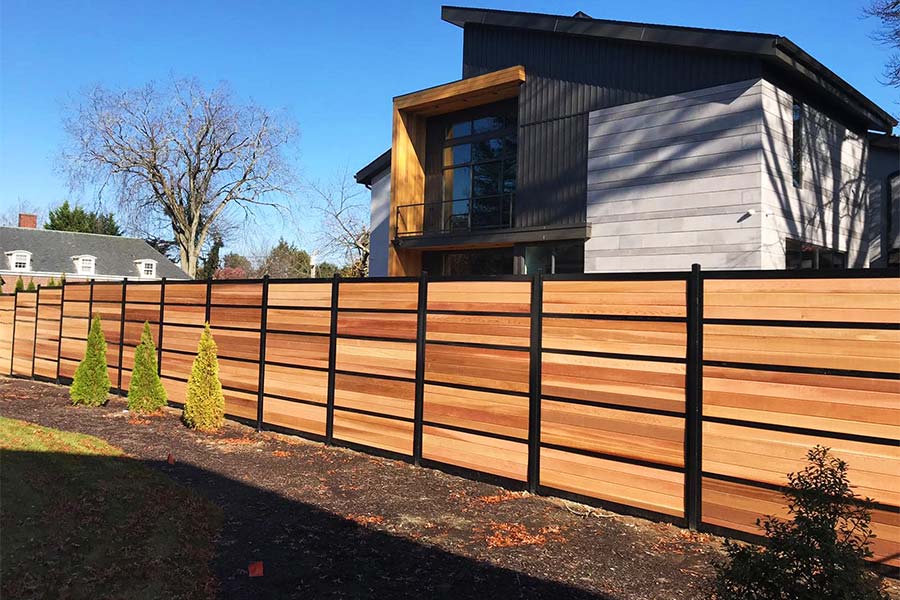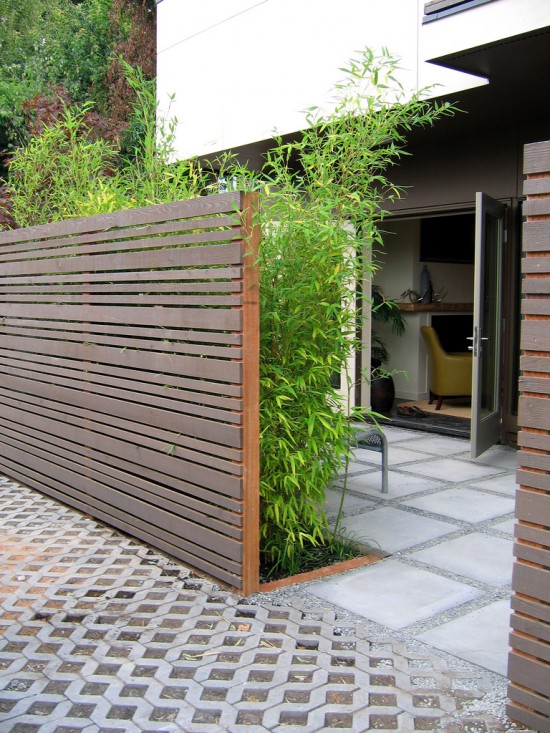All Categories
Featured
From hefty rain and snow to extreme sun and wind, weather-related damage is one of the most usual causes of fence damage. While you can't manage the weather condition, there are several methods to protect your fencing from the destructive results of climate and guarantee it lasts for years to come.
Wood Fences: While wooden fences are a traditional choice, they are extremely at risk to wetness and parasites. To make a wood fencing extra resilient, choose for pressure-treated lumber, cedar, or redwood.
Plastic Fences: Vinyl fences are very resilient and need little upkeep. They are immune to fading, cracking, and warping, making them suitable for areas that experience severe sun, rainfall, or cold weather. Plastic additionally won't rot or draw in parasites, using long-term security without the requirement for consistent upkeep.
Metal Fencings: Wrought iron and aluminum fences are superb options for their stamina and resistance to wind and wetness. However, they are vulnerable to rusting gradually, specifically if subjected to constant rainfall or moisture. Opt for galvanized or powder-coated steel fences to minimize the threat of rust.
![]()
Compound Fences: Combining wood fibers and plastic, composite fencings are resistant to decomposing, fading, and bug damage. They provide the look of timber with less upkeep, making them a suitable option for areas with variable weather conditions.
![]()
Wood Fences: A high quality timber sealer or tarnish is important to shield your fence from the components. Wood sealers obstruct dampness and shield against mold and mildew and mold growth. They likewise protect against UV damage that can cause fading and breaking. Make certain to reapply the covering every couple of years to keep your fence in leading condition.
Vinyl Fences: While vinyl is low-maintenance, you can still protect it better by applying a UV protectant. These finishes assist prevent discoloration triggered by long term sunlight direct exposure. In addition, utilize vinyl-specific cleaners to maintain the surface area free of stains or dust accumulation.
Metal Fencings: To shield steel fences from rust and deterioration, take into consideration using a rust-inhibiting guide followed by a protective paint made for outdoor use. Powder layer offers a durable and resilient coating that can endure extreme weather condition. if feasible.
Wooden Fences: Clean your wooden fence with a stress washing machine or a soft cloth and light detergent. Make sure to get rid of leaves, mold and mildew, and dust that can hold moisture versus the wood. Check the fence on a regular basis for indicators of rot, cracks, or insect problems. Early detection can protect against tiny issues from developing into costly repair work.
Vinyl Fences: Vinyl fencings are very easy to clean with soap and water. For tougher discolorations, you can utilize a moderate bleach solution or a plastic cleaner to bring back the fencing's appearance. Do not forget to check for any fractures that may allow water in, causing more damages.
Steel Fencings: Tidy steel fencings with a soft fabric to eliminate corrosion, dust, and dust. If you see rust spots, remove them promptly with a wire brush and treat the area with a rust-resistant primer or paint to avoid it from spreading out.
Wood Fencings: When mounting wood fence messages, make sure they are established deeply into the ground, preferably listed below the frost line to avoid shifting throughout freezing temperatures. Use concrete to secure the posts and stop them from leaning or being uprooted by strong winds.
Metal Fences: For steel fencings, make sure that the blog posts are firmly secured in concrete. This is specifically important in regions with constant storms or heavy winds. You might additionally wish to install extra supporting to provide added assistance against wind tension.
Furthermore, excessive dampness from neighboring plants can cause mold and rot in wood fencings, so keep vegetation at a secure range to permit correct airflow and drainage.
Metal fences must be inspected for corrosion before the winter months period begins, and any kind of impacted areas ought to be treated with rust-resistant products. In addition, applying a layer of paint or safety coating prior to the cool climate embed in can help protect your fence from ice and snow damages.
![]()
Conclusion. Protecting your fence from weather-related damage calls for a mix of correct product option, normal maintenance, and aggressive treatment. Whether you have a wood, vinyl, steel, or composite fencing, the right safety measures can extend its lifespan and keep its appearance. By adhering to these simple yet reliable actions, you can guard your fencing versus the components and keep it looking great for several years to find.
- Select Weather-Resistant Materials. One of the most reliable ways to shield your fencing is by choosing the appropriate material for your environment. Certain materials are a lot more durable and much better fit to hold up against certain weather.
Wood Fences: While wooden fences are a traditional choice, they are extremely at risk to wetness and parasites. To make a wood fencing extra resilient, choose for pressure-treated lumber, cedar, or redwood.
Plastic Fences: Vinyl fences are very resilient and need little upkeep. They are immune to fading, cracking, and warping, making them suitable for areas that experience severe sun, rainfall, or cold weather. Plastic additionally won't rot or draw in parasites, using long-term security without the requirement for consistent upkeep.
Metal Fencings: Wrought iron and aluminum fences are superb options for their stamina and resistance to wind and wetness. However, they are vulnerable to rusting gradually, specifically if subjected to constant rainfall or moisture. Opt for galvanized or powder-coated steel fences to minimize the threat of rust.

Compound Fences: Combining wood fibers and plastic, composite fencings are resistant to decomposing, fading, and bug damage. They provide the look of timber with less upkeep, making them a suitable option for areas with variable weather conditions.
- Apply Protective Coatings. No matter of the material, using protective coverings is vital in prolonging the life of your fence. Coatings develop a barrier that guards your fence from moisture, UV rays, and various other environmental stressors.

Wood Fences: A high quality timber sealer or tarnish is important to shield your fence from the components. Wood sealers obstruct dampness and shield against mold and mildew and mold growth. They likewise protect against UV damage that can cause fading and breaking. Make certain to reapply the covering every couple of years to keep your fence in leading condition.
Vinyl Fences: While vinyl is low-maintenance, you can still protect it better by applying a UV protectant. These finishes assist prevent discoloration triggered by long term sunlight direct exposure. In addition, utilize vinyl-specific cleaners to maintain the surface area free of stains or dust accumulation.
Metal Fencings: To shield steel fences from rust and deterioration, take into consideration using a rust-inhibiting guide followed by a protective paint made for outdoor use. Powder layer offers a durable and resilient coating that can endure extreme weather condition. if feasible.
- Regular Cleansing and Examinations. Correct cleaning and routine inspections are vital to keeping the integrity of your fencing. Accumulation of dirt, mold, and particles can catch moisture versus your fencing and create long-term damages.
Wooden Fences: Clean your wooden fence with a stress washing machine or a soft cloth and light detergent. Make sure to get rid of leaves, mold and mildew, and dust that can hold moisture versus the wood. Check the fence on a regular basis for indicators of rot, cracks, or insect problems. Early detection can protect against tiny issues from developing into costly repair work.
Vinyl Fences: Vinyl fencings are very easy to clean with soap and water. For tougher discolorations, you can utilize a moderate bleach solution or a plastic cleaner to bring back the fencing's appearance. Do not forget to check for any fractures that may allow water in, causing more damages.
Steel Fencings: Tidy steel fencings with a soft fabric to eliminate corrosion, dust, and dust. If you see rust spots, remove them promptly with a wire brush and treat the area with a rust-resistant primer or paint to avoid it from spreading out.
- Enhance Your Fence with Proper Installation. Correct setup is just one of one of the most efficient ways to prevent weather-related damage. A fencing that is improperly set up is much more likely to collapse or experience damage throughout tornados.
Wood Fencings: When mounting wood fence messages, make sure they are established deeply into the ground, preferably listed below the frost line to avoid shifting throughout freezing temperatures. Use concrete to secure the posts and stop them from leaning or being uprooted by strong winds.
Metal Fences: For steel fencings, make sure that the blog posts are firmly secured in concrete. This is specifically important in regions with constant storms or heavy winds. You might additionally wish to install extra supporting to provide added assistance against wind tension.
- Trim Trees and Shrubs Near Your Fence. Thick trees and hedges can cause substantial damages to your fencing, especially throughout high winds or hefty tornados. Tree branches can scuff against the fence, causing scratches, and their roots can undercut the messages. Maintain plant life cut and make sure that tree branches are not leaning on or near the fence.
Furthermore, excessive dampness from neighboring plants can cause mold and rot in wood fencings, so keep vegetation at a secure range to permit correct airflow and drainage.
- Winterize Your Fencing. Take added preventative measures to shield your fence from freezing temperature levels, snow, and ice if you live in an area with severe winters months. For wooden fences, see to it the base of the messages rises over ground level to prevent water build-up, which can ice up and crack the timber. Consider using a moisture barrier around the base of the articles to maintain them completely dry throughout the winter season.
Metal fences must be inspected for corrosion before the winter months period begins, and any kind of impacted areas ought to be treated with rust-resistant products. In addition, applying a layer of paint or safety coating prior to the cool climate embed in can help protect your fence from ice and snow damages.
- Post-Storm Fixes. Storms can trigger prompt damages to your fence, including fallen branches, busted articles, or dislodged panels. After each tornado, check your fence thoroughly to look for any kind of visible damages. Address minor concerns promptly before they become larger, much more costly repairs. It's a good concept to speak with a professional for repair services to ensure it continues to be structurally audio. if your fence has actually been badly damaged.

Conclusion. Protecting your fence from weather-related damage calls for a mix of correct product option, normal maintenance, and aggressive treatment. Whether you have a wood, vinyl, steel, or composite fencing, the right safety measures can extend its lifespan and keep its appearance. By adhering to these simple yet reliable actions, you can guard your fencing versus the components and keep it looking great for several years to find.
Latest Posts
Uncover Montclare Auto Repair’s Leading Auto Repairs and Why Drivers Rely On Them
Published May 31, 25
1 min read
Explore Premier Auto Repair Services in Chicago – Keep Your Car Running Smoothly
Published May 27, 25
1 min read
Find Cost-Effective Auto Repairs with Montclare’s Limited-Time Service Specials
Published May 22, 25
1 min read
More
Latest Posts
Uncover Montclare Auto Repair’s Leading Auto Repairs and Why Drivers Rely On Them
Published May 31, 25
1 min read
Explore Premier Auto Repair Services in Chicago – Keep Your Car Running Smoothly
Published May 27, 25
1 min read
Find Cost-Effective Auto Repairs with Montclare’s Limited-Time Service Specials
Published May 22, 25
1 min read